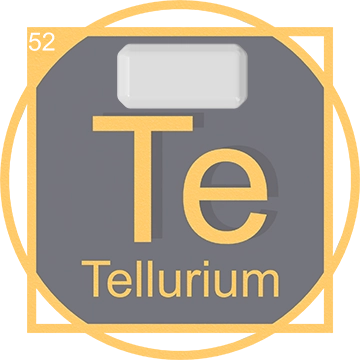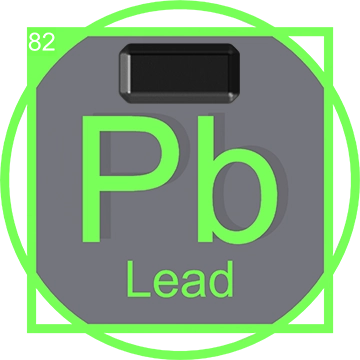Exploring Tellurium (Te) - A Multifaceted Element
Tellurium (Te) is a fascinating and lesser-known element in the periodic table, exhibiting unique properties and versatile applications that extend from scientific research to innovative technological solutions. In this article, we delve deep into the nature of Tellurium, its discovery, its role in the periodic table, and its widespread use in various technological fields. Understanding Tellurium not only enriches our knowledge of the elements but also highlights its importance in advancing modern technology.
Discovery of Tellurium

Tellurium was first identified in 1782 by the Austrian mineralogist Franz-Joseph Müller von Reichenstein. However, it was Martin Heinrich Klaproth, a German chemist, who confirmed its existence and named the element in 1798. The name "Tellurium" comes from the Latin word "tellus," meaning "earth," marking a significant discovery in the realm of chemistry during that era.
Tellurium in the Periodic Table
Positioned in Group 16 of the periodic table, Tellurium belongs to the chalcogen family, which includes oxygen, sulfur, selenium, and polonium. This group is characterized by its members' ability to form various oxidative states and multiple compounds. Tellurium is a semimetal, reflecting properties of both metals and non-metals, which makes it exceptionally versatile in different chemical reactions and applications.
Explore Tellurium on the Periodic Table to see its placement and compare it with other elements in its group.
Scientific Significance and Research
Scientifically, Tellurium's unique properties make it a subject of interest in many research fields. It has a higher electrical conductivity in certain forms, which changes depending on the lighting conditions. This property is studied for potential use in photoconductors and solar cells. Its rarity and peculiar chemical behavior also make it an excellent candidate for research in understanding the formation of the Earth and its geochemical processes.
Applications in Technology
1. Electronics and Computing

Tellurium is crucial in the manufacturing of various electronic devices. It is used in the creation of phase-change memory chips, which are a type of non-volatile RAM that is faster and more durable than traditional hard drives. The ability of Tellurium to change states with heat application allows for data to be stored and retrieved more efficiently.
2. Solar Panels
In the field of renewable energy, Tellurium-based compounds, particularly cadmium telluride, are used in some of the most efficient thin-film solar panels. These panels are not only cost-effective but also have one of the smallest carbon footprints of any solar technology currently available.
3. Thermoelectric Materials

Tellurium is an essential component in thermoelectric materials that convert temperature differences into electrical voltage. This application is particularly valuable in power generation from waste heat recovery and in cooling systems where traditional methods are not viable.
4. Metallurgy
Adding Tellurium to stainless steel and copper enhances machinability, making these metals easier to cut and shape, which is beneficial in the production of precision parts in engineering and manufacturing industries.
5. Glass and Ceramics

Tellurium oxides are used in the production of glass and ceramics, providing unique colors and improved heat resistance. This makes it valuable in the crafting of specialized glass and ceramic products which require high durability.
Conclusion
Tellurium's diverse applications and unique properties make it a standout element in the periodic table. Its contributions to technology and science continue to grow as research advances. For those interested in the elements of the periodic table, Tellurium offers a rich story of scientific intrigue and practical utility.
This article not only enriches our understanding of Tellurium but also highlights its significance in modern technological advancements and its potential for future applications. Whether for educational purposes or industry insights, Tellurium remains a vital element worth exploring further.
How Tellurium Is Mined
Tellurium is primarily obtained as a by-product of copper and lead mining. The extraction process involves the processing of anode sludges from the electrolytic refining of copper, where tellurium is recovered. This method allows for the efficient use of resources, as copper mining is abundant, and Tellurium is derived from materials that would otherwise be discarded.
Major Sources and Associated Elements
Major mines that produce Tellurium include:
- The United States, particularly in copper mines in Arizona and Utah
- Canada, from lead and zinc mining regions in British Columbia
- Peru, from copper mines in the Andes mountains
- Kockbulak Mine, Ohangaron District, Tashkent Region, Uzbekistan.
Alongside Tellurium, these mines often yield other valuable elements such as Copper, Lead, and Zinc, which are commercially significant in their own right.
Modern Applications of Tellurium
In the contemporary world, Tellurium's applications are diverse and impactful:
- In electronics, for phase-change memory chips
- In renewable energy, in thin-film solar panels
- In thermoelectric devices for power generation from waste heat
- In metallurgy to improve the machinability of metals
- In glass and ceramic production to enhance color and durability
Future Prospects of Tellurium

The future of Tellurium looks promising with potential advancements in technology and science. Research is ongoing into expanding its use in next-generation batteries and advanced computing systems. The development of ultra-thin and flexible solar panels could revolutionize solar power, making it more accessible and efficient. In medicine, Tellurium-based compounds are being studied for their antibacterial properties, which could lead to new treatments for antibiotic-resistant bacteria.
Furthermore, the exploration of Tellurium nanoparticles has opened new possibilities in the fields of catalysis and environmental remediation, showcasing Tellurium's potential to contribute significantly to sustainable technologies and green chemistry.













